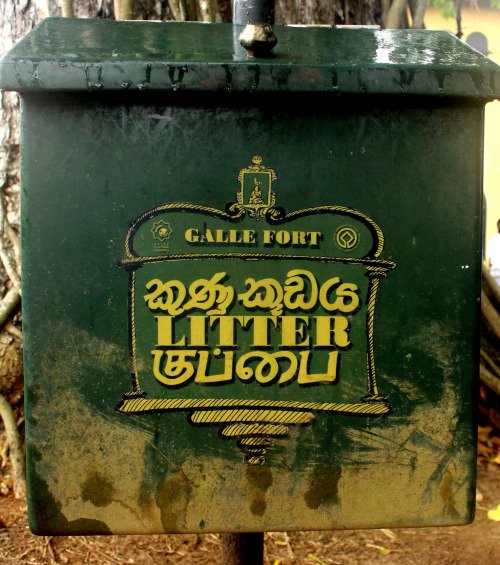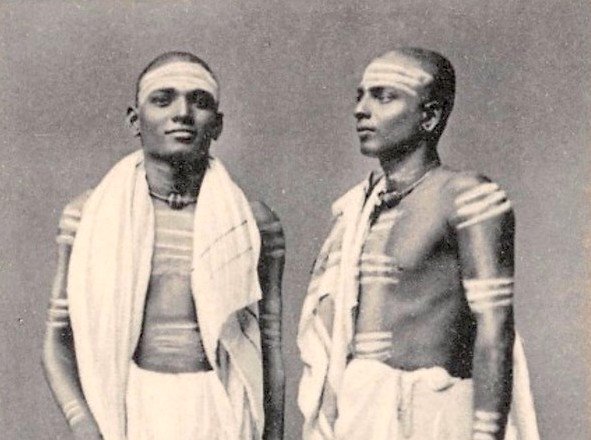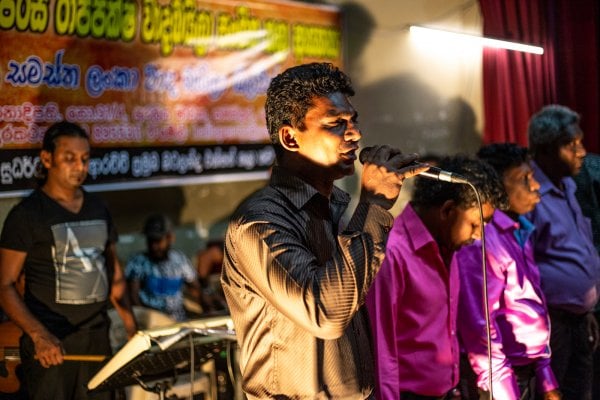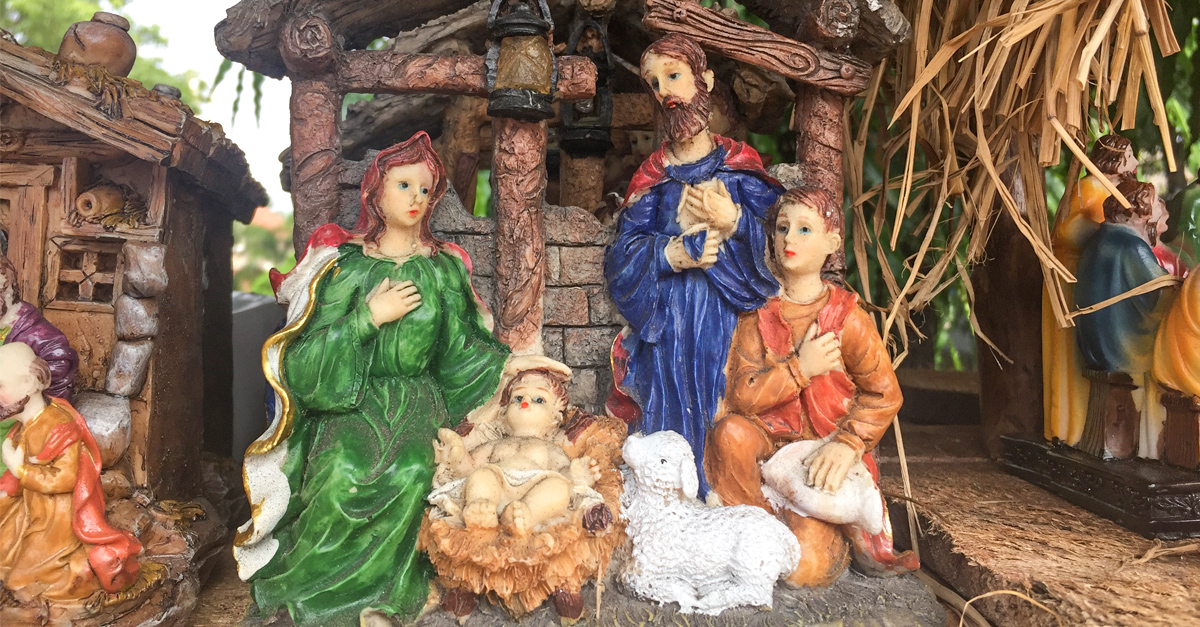
At an intersection on a busy street in bustling Kotahena is a shrine for St. Anthony, patron saint of lost things. Milling in through the three glass doors of the imposing Neoclassical façade are ordinary people wanting extraordinary miracles. The St. Anthony’s Shrine in Kochchikade has a reputation for granting the wishes of those who fervently pray at its altars, but is equally well-known for is its ability to draw a multi-religious audience.
Outside the church, beggars sit, reliant on the charity and goodwill of passersby. Across the street, numerous small shops have sprung up, catering specifically to the Catholics that congregate morning and evening at the church. Rows of plaster statues of Mary and Jesus line the store walls, strings of coloured rosaries are laid out on countertops and cases of containers filled with crosses and pendants fill the empty spaces.
But when Christmas approaches, the row of shops on the street opposite the ‘Kochchikade Church’, as it is known in common parlance, take on a more festive appearance. There is a sudden proliferation of nativity cribs — rough, wooden skeletal structures, with a thatched, straw ‘roof’, stacked atop each other in varying sizes. Some of the cribs are empty, some contain plaster figurines of the nativity scene: Mary and Joseph, the baby Jesus in a manger, the three wise men, and an assortment of attending animals.
Tuan Saeed is 36 and has been in the crib-making business for 12 years now. He got into it quite by accident — he was hired to help someone make cribs one year, and decided to get into the business himself the next year. Business has been good, Tuan said. When he began, he was selling cribs at Rs. 60-70, now he retails them at over Rs. 1,000. The cribs require the most basic elements to make—wood, straw and nails—and Tuan makes a decent profit from what he sells during the season.
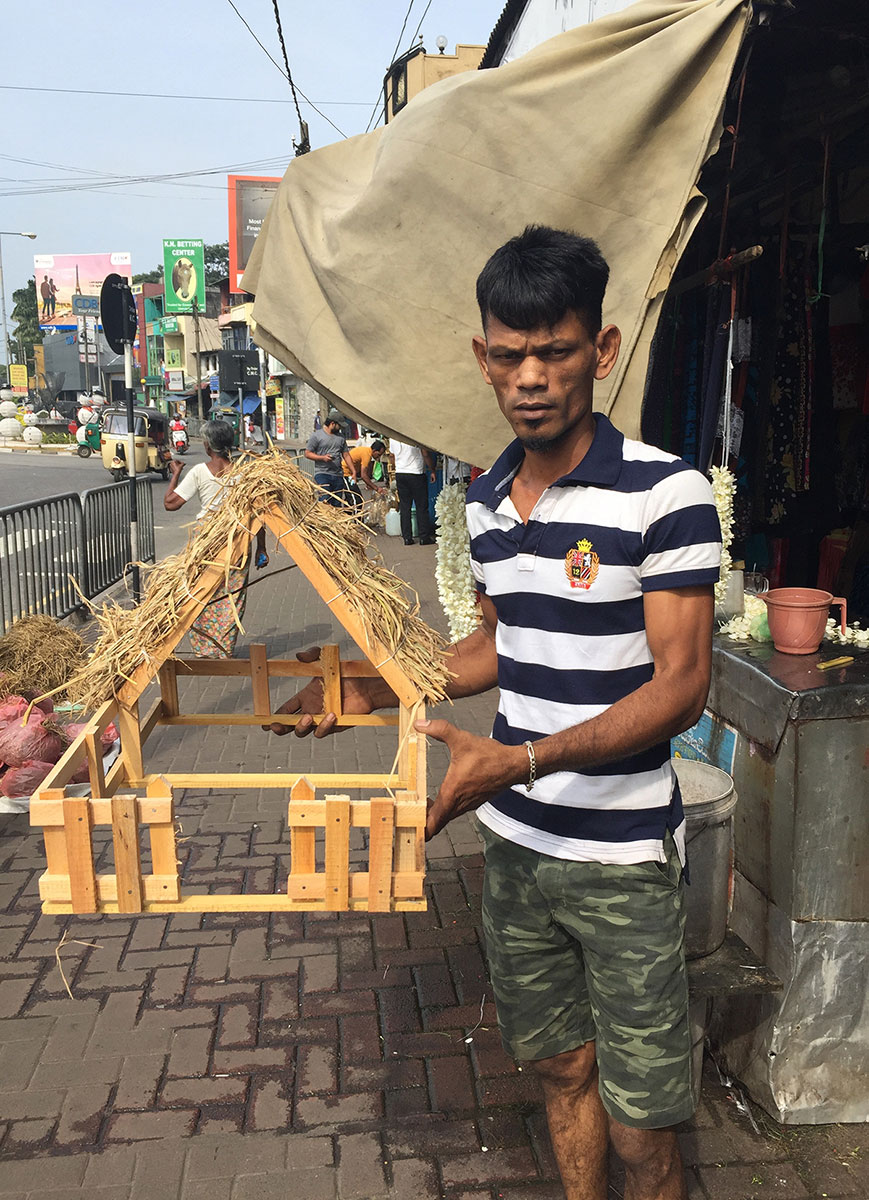
Image courtesy: Roar Media/Roel Raymond
“I start preparing from around September,” he said, explaining that it was because he didn’t want to be rushed during the season. “The first set of cribs go into the shops around December 10 — maybe 10 to 20 of them. But by the end of the season, I would have sold about 600,” he estimated, adding with a laugh that people even bought cribs on their way home after mass early on Christmas morning. “Maybe they didn’t have time before,” he hypothesised, with a shrug of his shoulders.
Tuan, who is from nearby Modera, spends the rest of the year driving a three-wheeler, but said that selling cribs during Christmas is more profitable than his other occupation. In fact, Tuan is thinking of entering the Vesak kudu (Vesak lantern) market as well, when that holiday comes around mid-next year. A Muslim by faith, Tuan knows very little about Christmas. “It’s the day Jesu-baba (Baby Jesus) was born,” he said, but added frankly that he didn’t know much more.
Elsewhere in Dehiwala, Sanjeewa Pubudu Nanayakkara (33) has set up a stall alongside the pavement outside the St. Mary’s Church, where he sells nativity cribs in assorted sizes. Unlike Tuan’s collection, Sanjeewa’s cribs are arranged on shelves, in neat rows, and according to size — each complete with a little nativity family. Sanjeewa is a large man with a mop of oily, curly hair, and a belly that hangs over his trousers. He has been selling cribs since he was 18—for 15 years now—but grumbles that business now is “not good”.
“Before this, it was just me doing this business,” he complained. “Now there is competition, others are also selling cribs.” Like Tuan, Sanjeewa is a three-wheel driver when he isn’t making and selling cribs, but laments that his vehicle was recently seized for non-payment, and that he is left with few other options. As we speak, families stop to inquire how much a crib costs, and Sanjeewa breaks away to attend to them, before resuming the conversation.

Photo courtesy: Roar Media/Roel Raymond
Sanjeewa is married and is the father of a three-year-old girl. He is a practising Buddhist and lives in Kalutara from where he ferries cribs to Colombo in his truck every morning. Sanjeewa said he had an arrangement with the church that allowed him to set up his stall by around the second week of December. “I used to sell close to 1, 000 cribs during the season, but now it’s much less,” he said.
Sanjeewa is not sure why people buy less from him, and his glowering face was an indication of his disinclination to discuss the topic any further. But it is clear the market for cribs is robust and thriving.
It is unclear when the practice of making cribs came to Sri Lanka. But legend has it that the tradition of making cribs, or crèches as they are also known, began in Italy in 1223.
While living in the town of Greccio, St. Francis of Assisi, patron saint of animals and the natural environment, asked a man by the name of Giovanni Velitta to enact the scene of Christ’s birth at Bethlehem, which Velitta did to St. Francis’s delight. The concept of bringing Bethlehem home spread quickly, and soon there were Christmas cribs in churches and homes all over the world.


